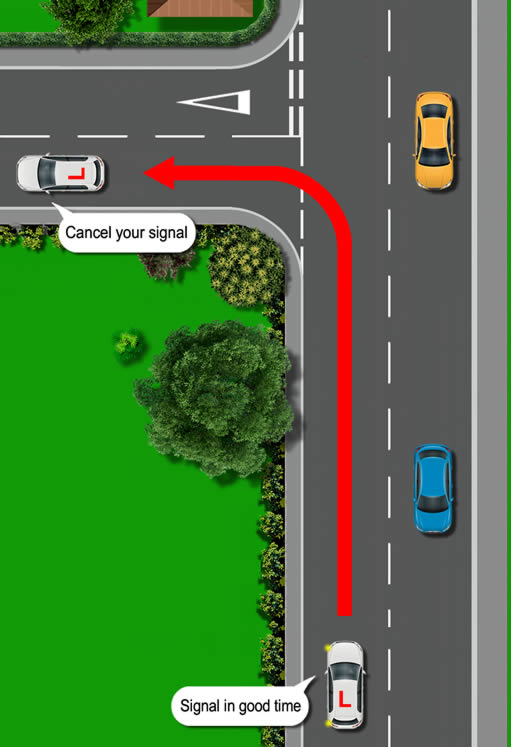When making a left turn from a major road into a minor side road, it’s important that you signal in good time to enable other road users time to prepare to slow down. When signalling, use the MSPSL routine.

When we apply a signal, they usually automatically cancel when we straighten the steering wheel. Occasionally however, they don’t and we need to cancel them ourselves.
Once you’ve completed the left turn and straightened up, check that your indicators have switched off and if they haven’t manually switch them off. If you’re unaware that your signals are still flashing, it can cause confusion to other road user. Forgetting to cancel your signals is also a very easy way of failing the driving test.
Signals Causing Confusion
Along with forgetting to cancel your signals, another cause of confusion is signalling at an inappropriate time. You need to be careful that when signalling, you’re not causing confusion in what road you intend on taking.

Generally you’ll only want to signal for the road you intend on taking. Signalling too early can give the impression that you intend on taking another road. However, if you are in an unlikely situation where two left turns are very close together and you intend on taking the second turn, it may be considered too hazardous to leave the signal until you’ve passed the first left turn.
Applying your signal before the left turn may cause confusion, but might be the safest option when junctions are very close together.
Should You Signal When You Don’t See Any Vehicles Around?
Yes, it’s advisable that you always apply a signal, even if you can’t see any other vehicles around. The reason being is that there may be another road user who’s out of your view or a pedestrian who may benefit from seeing your signal.